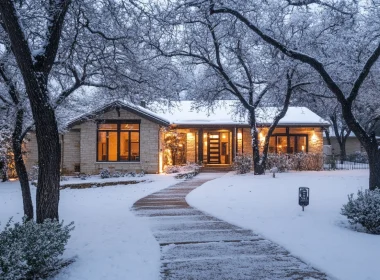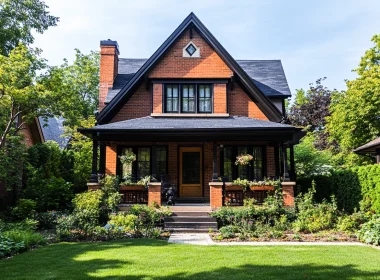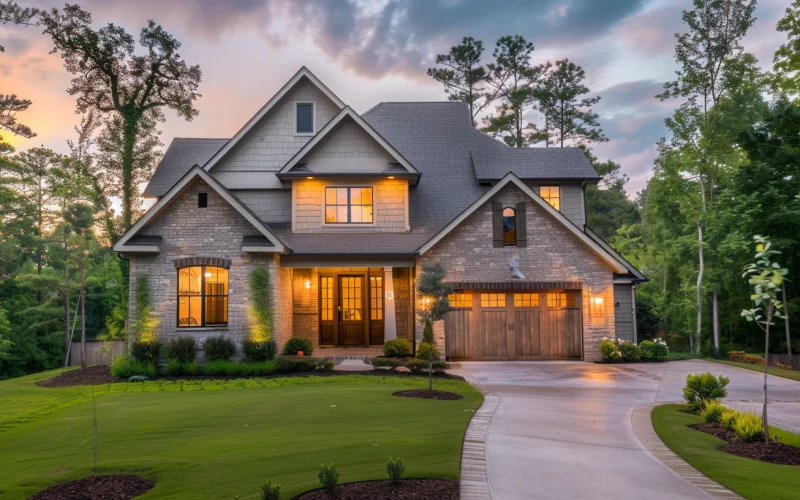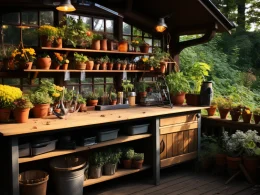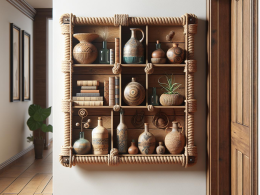In recent years, pallet fences have gained significant popularity among homeowners looking for cost-effective, eco-friendly, and versatile fencing solutions.
These fences, made from repurposed wooden pallets, offer a unique and rustic charm that complements various outdoor spaces.
Not only do they provide privacy and security, but they also allow for creative expression through innovative designs.
In this blog post, we will explore eight stunning modern DIY pallet fence ideas that will inspire you to transform your yard or garden into a captivating and inviting area.
Whether you prefer a sleek horizontal layout, a bold chevron pattern, or a lush living wall, these pallet fence ideas cater to various styles and preferences.
So, discover how you can create a beautiful and functional fence using readily available materials.
1. Horizontal Pallet Fence
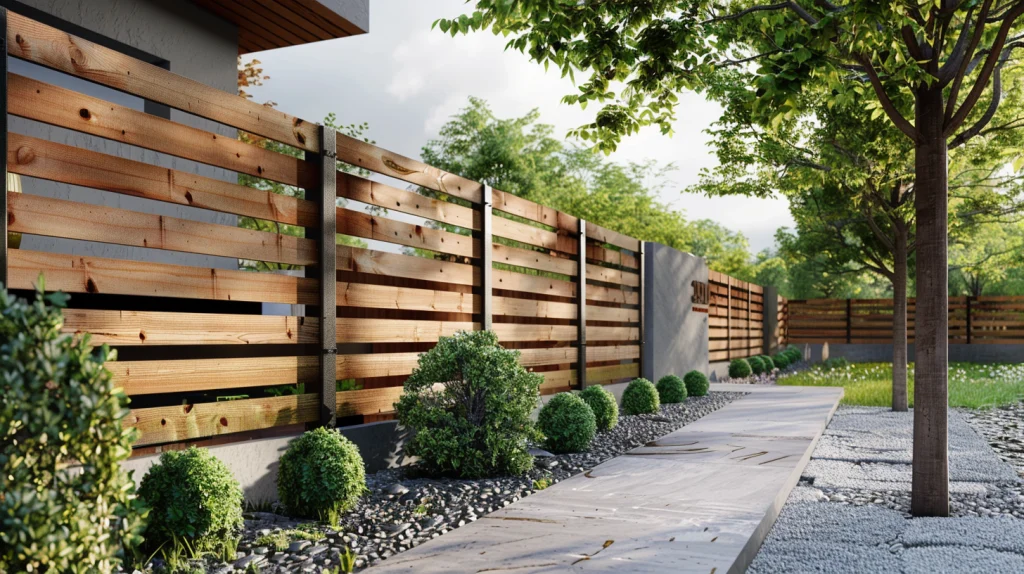
A horizontal pallet fence is a sleek and modern take on the traditional pallet fence design.
Arrange pallet boards horizontally and secure them to vertical support posts to create this look.
You can leave small gaps between the boards for a more open feel or place them tightly together for increased privacy.
This design works well in contemporary outdoor spaces and pairs nicely with minimalist landscaping.
Materials and tools needed:
- Wooden pallets
- Vertical support posts
- Saw
- Hammer and nails or screws
- Measuring tape
- Level
Step-by-step installation guide:
1. Disassemble the pallets and select the best boards for your fence.
2. Cut the boards to your desired length, ensuring they are even.
3. Secure the vertical support posts in the ground, making sure they are level.
4. Attach the pallet boards horizontally to the support posts, starting from the bottom and working your way up.
5. Use a level to ensure each board is straight and aligned.
6. Continue attaching boards until you reach your desired fence height.
Pros:
- Creates a clean, modern look
- Allows for customization of board spacing
- Relatively simple installation process
Cons:
- May require more materials than other designs
- Horizontal boards may not provide as much privacy as vertical boards
2. Chevron Pattern Pallet Fence

A chevron pattern pallet fence adds a trendy and eye-catching element to your outdoor space.
This design involves cutting pallet boards into equal lengths and arranging them in a zigzag or chevron pattern.
The chevron pattern creates a sense of movement and visual interest, making it a perfect choice for those looking to make a statement with their fence.
Materials and tools needed:
- Wooden pallets
- Saw
- Measuring tape
- Hammer and nails or screws
- Paintbrush (optional)
Instructions for creating the pattern:
1. Disassemble the pallets and select boards of similar width and thickness.
2. Cut the boards into equal lengths, ensuring you have enough to create the desired pattern.
3. Arrange the boards in a chevron pattern, with each board angled in the opposite direction of the one before it.
4. Secure the boards together using nails or screws at the points where they meet.
5. Attach the chevron pattern sections to vertical support posts.
6. Optional: Paint the fence in a color that complements your outdoor space.
Pros:
- Creates a unique and stylish look
- Adds visual interest and movement to your fence
- Can be painted to match your outdoor decor
Cons:
- Requires more precise cutting and assembly
- May be more time-consuming to install than other designs
3. Staggered Vertical Pallet Fence
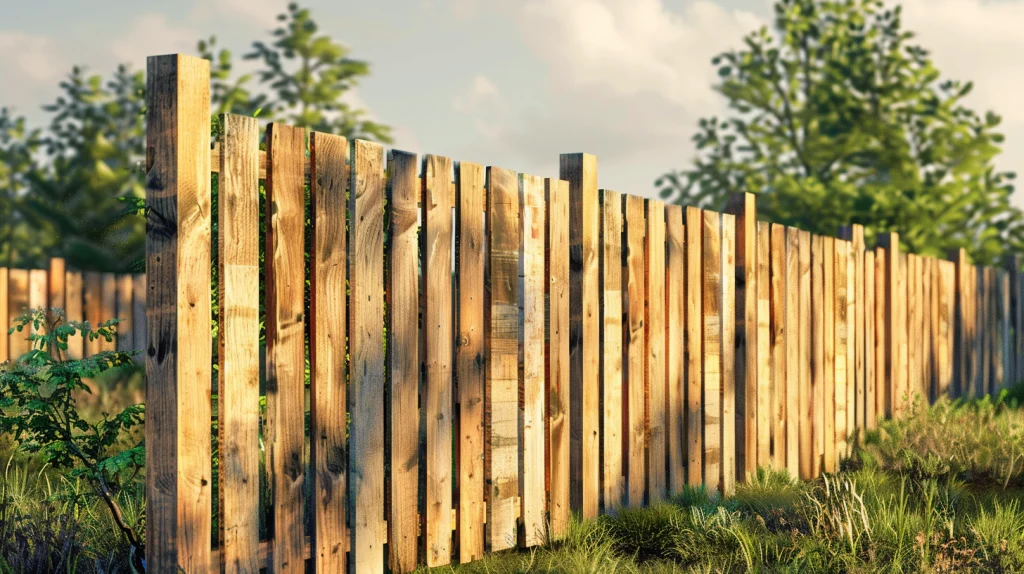
A staggered vertical pallet fence offers a playful and visually appealing twist on the classic vertical fence design.
By attaching pallet boards vertically at varying heights, you create a staggered effect that adds depth and dimension to your fence.
This design is perfect for those who want a fence that stands out while still maintaining a sense of traditional charm.
Materials and tools needed:
- Wooden pallets
- Saw
- Hammer and nails or screws
- Measuring tape
- Level
Step-by-step guide for installation:
1. Disassemble the pallets and select the best boards for your fence.
2. Cut the boards to varying lengths, ensuring a mix of tall and short pieces.
3. Secure the vertical support posts in the ground, making sure they are level.
4. Attach the pallet boards vertically to the support posts, alternating between tall and short boards to create the staggered effect.
5. Use a level to ensure each board is straight and aligned.
6. Continue attaching boards until you reach your desired fence height.
Pros:
- Creates a unique and visually interesting look
- Provides a good balance of privacy and openness
- Can be customized by adjusting the height variations
Cons:
- Requires more precise measuring and cutting
- May be more challenging to install than a uniform vertical fence
4. Painted Pallet Fence
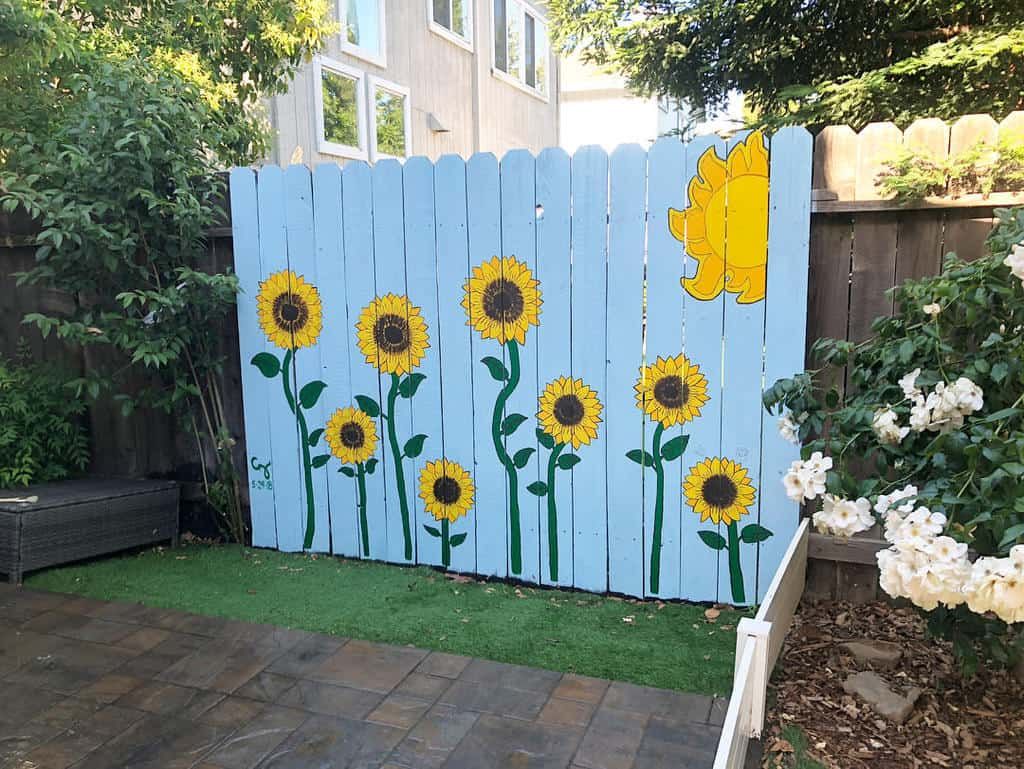
A painted pallet fence is a simple yet effective way to add a pop of color and personality to your outdoor space.
By choosing a bold, modern color like black, charcoal, or dark blue, you can transform a basic pallet fence into a striking and stylish feature.
This design works well with various outdoor styles and can be easily customized to suit your preferences.
Materials and tools needed:
- Wooden pallets
- Saw
- Hammer and nails or screws
- Measuring tape
- Exterior paint and primer
- Paintbrush or sprayer
Painting process and tips:
1. Disassemble the pallets and select the best boards for your fence.
2. Sand the boards to remove any rough spots and splinters.
3. Apply a coat of exterior primer to the boards, allowing it to dry completely.
4. Paint the boards with your chosen color, using a paintbrush or sprayer for even coverage.
5. Allow the paint to dry completely before handling the boards.
6. Assemble the painted boards into your desired fence design and attach them to vertical support posts.
Pros:
- Allows for customization and personal expression
- Can complement your home’s exterior or outdoor decor
- Protects the wood from weathering and decay
Cons:
- Requires additional time for painting and drying
- May need periodic touch-ups to maintain the color
5. Pallet and Steel Fence

Combining wooden pallets with steel posts or frames creates an industrial-inspired fence that is both sturdy and visually striking.
This design juxtaposes the warmth of wood with the strength and durability of steel, resulting in a fence that is both functional and fashionable.
This mix of materials is perfect for modern or urban outdoor spaces.
Materials and tools needed:
- Wooden pallets
- Steel posts or frames
- Saw
- Drill
- Screws or bolts
- Measuring tape
- Level
Installation process:
1. Disassemble the pallets and select the best boards for your fence.
2. Cut the boards to your desired length, ensuring they are even.
3. Secure the steel posts or frames in the ground, making sure they are level and evenly spaced.
4. Attach the pallet boards to the steel posts or frames using screws or bolts.
5. Continue attaching boards until you reach your desired fence height.
Pros:
- Creates a strong and durable fence
- Offers a unique, industrial-inspired look
- Combines the benefits of wood and steel
Cons:
- It may require more specialized tools and skills to work with steel
- It can be more expensive than an all-wood fence
6. Living Wall Pallet Fence
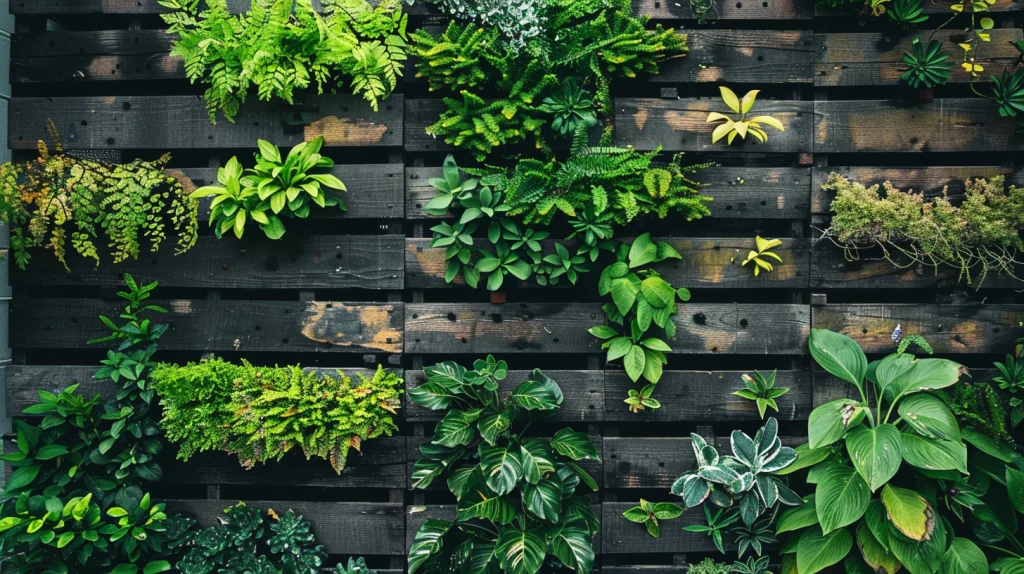
A living wall pallet fence incorporates plants and greenery into your fence design, creating a lush and inviting outdoor space.
By adding planters or pockets to your pallet fence, you can grow a variety of plants, herbs, or even small vegetables.
This design not only provides privacy and beauty but also contributes to a healthier and more sustainable environment.
Materials and tools needed:
- Wooden pallets
- Saw
- Hammer and nails or screws
- Measuring tape
- Landscaping fabric
- Staple gun
- Potting soil
- Plants of your choice
Step-by-step guide for creating a living wall:
1. Disassemble the pallets and select the best boards for your fence.
2. Cut the boards to your desired length, ensuring they are even.
3. Create pockets or planters by attaching landscaping fabric to the back of the pallet boards using a staple gun.
4. Fill the pockets with potting soil and carefully place your chosen plants inside.
5. Attach the living wall sections to vertical support posts, ensuring they are secure and level.
6. Water the plants regularly and maintain them as needed.
Pros:
- Creates a beautiful and eco-friendly fence
- Provides a natural habitat for beneficial insects and birds
- Can help improve air quality and reduce noise pollution
Cons:
- Requires regular maintenance and watering
- May not be suitable for all climates or plant types
Conclusion
From sleek horizontal designs to lush living walls and geometric patterns, these pallet fence ideas offer a wide range of options for transforming your outdoor space.
By combining the rustic charm of pallets with modern elements like bold colors, industrial materials, and creative patterns, you can create a functional and visually appealing fence.
We encourage you to try these pallet fence ideas in your yard or garden, adapting them to your style and preferences.
Before beginning your project, remember to properly prepare your pallets by cleaning, sanding, and treating the wood.
Share your thoughts, tips, and photos in the comments below or on our social media channels. Together, we can inspire and help others to create beautiful and sustainable fences using readily available materials.

